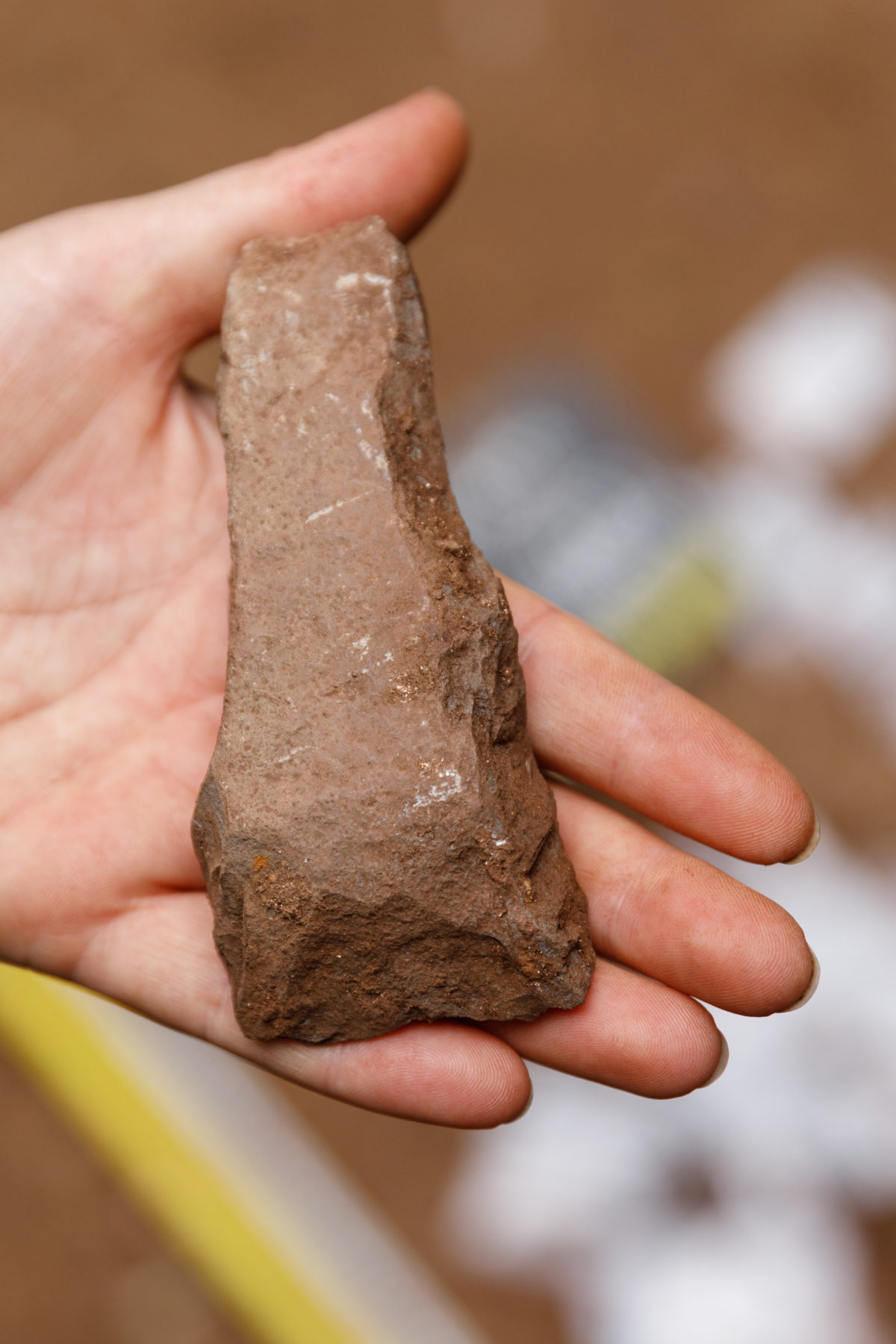The discovery this week of two basalt adzes on Norfolk Island is expected to rewrite the history of the settlement of Polynesian peoples throughout the Pacific during the past millennium.
The first remarkable object was found shortly after a team from the Australian Museum and University of Sydney, together with local volunteers, began preliminary excavations on Monday morning of a site on a track within Norfolk Island National Park.
“We’ve had a great find,” beamed Dr Amy Way, as Australian Geographic arrived on site, just after the first adze was brought up from the ground. “A really distinctive Polynesian-style stone adze made of basalt, right on the surface – very indicative that this was a Polynesian site.”
Amy is an archaeologist with the Australian Museum and Sydney University, and the site was first suggested to her as being of potential interest by her master’s student Nicola Jorgensen, a Norfolk Islander.
“The Polynesian adze is a really distinctively shaped woodworking tool – it was a primary tool to make canoes,” Amy explained. “So, we know Polynesian people are phenomenal seafarers and they needed tools to make their canoes and the stone adze is the main tool for that.”
This is only the second find of ancient Polynesian activity on Norfolk. In the mid-1990s there was an excavation at the opposite end of the island run by Professor Atholl Anderson from the Australian National University.
“They found a building and also a religious structure down at Emily Bay, which is within Norfolk’s World Heritage site,” Amy said, adding that archaeologists have been looking ever since then for another site.
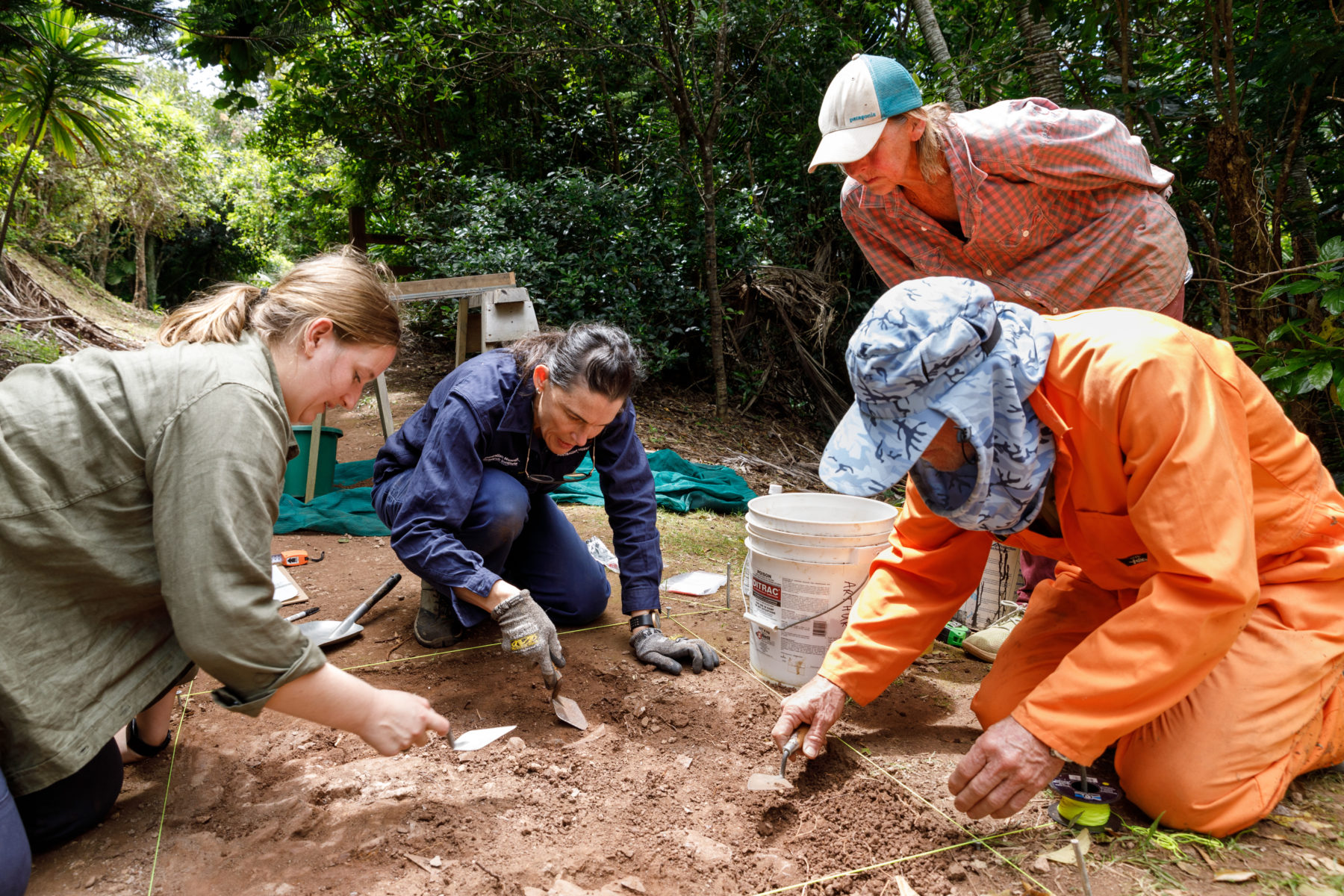
Evidence of past Polynesian occupation
Archaeological evidence from that first site has previously shown that Polynesian seafarers occupied Norfolk Island for several hundred years from about the 13th century.
Then they seemed to have disappeared from the island.
The new site was first brought to the attention of Nicola by fellow islander “Snowy” Tavener, who recognised more than three years ago that small tell-tale chips of basalt at the site looked very similar to what he’d seen on a visit to Pitcairn Island at ancient Polynesian quarry sites.
Those chips are now believed to almost certainly be artefacts from Polynesian toolmaking, and they too have been collected in their hundreds from the new Norfolk Island site to be analysed back at a lab on the island, where they’ll remain to eventually be put on public display.
Charcoal flecks at the site have also been found and collected for carbon-dating to reveal an approximate age of the new site.
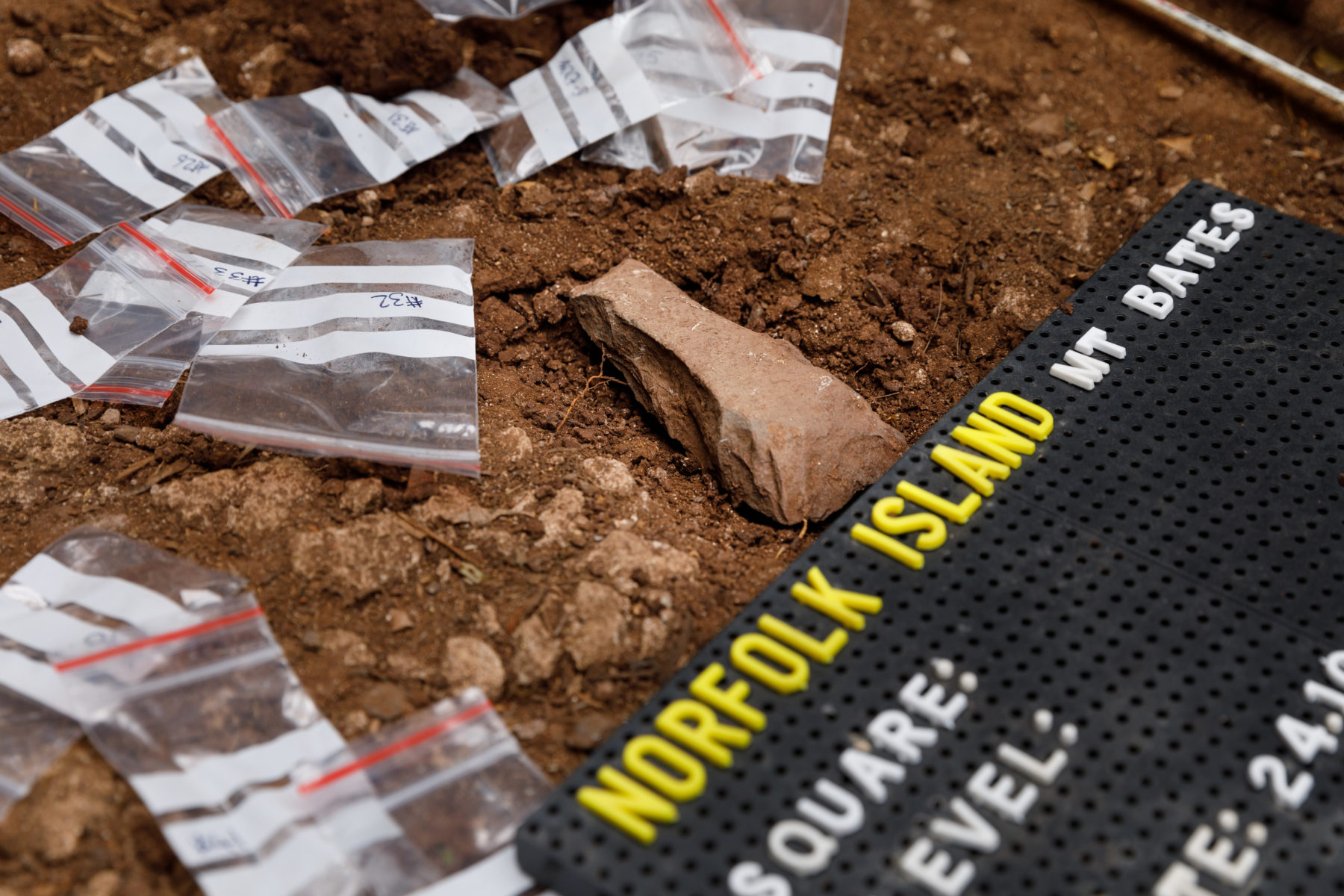
Basalt, a hard, fine-grained rock of volcanic origin is distributed widely throughout the Pacific, which has long been a hotbed of volcanic activity.
Using a portable X-ray fluorescence infrared technique, it’s possible to identify chemical signatures in different pieces of basalt, which reveals where they’re from.
And before this week’s find, that’s exactly what Nicola has been doing: analysing basalt from Norfolk and other South Pacific islands – including New Zealand and Pitcairn Island – to identify whether they have been transported deliberately between different locations; a sure sign of early travel by people between these islands that are all thousands of kilometres apart.
“What I’m looking for is local basalt versus non-local basalt,” Nicola explains. “So, if you’re finding a lot of stones from New Zealand [1460km to the southeast] or the Kermadec Islands [1347 to the east] on Norfolk Island, that’s a pretty telling sign that there was some sort of interaction with those places; if they came from another location people may have brought that stone with them or perhaps they were trading.”
On Wednesday, two days after the initial find, another adze was found at the same 1m x 1m excavation site. “It was at a different stage of manufacture, which really confirms that this was an adze-making site,” Amy said.
Deep cultural connection
This is only the second known site of an ancient Polynesian presence on the island.
Norfolk has had a chequered history of occupation and governance since James Cook first sailed past it.
Cook famously noted that Norfolk’s tall pine trees might be useful for making ship masts, and that another local endemic – a flax plant – might be useful in making sails. Neither proved so but a British colony was established, and later Norfolk became a harsh penal colony.
It’s been governed in various way since but is presently administered as an offshore territory of Australia.
“This new site is important because there’s only been one confirmed Polynesian site identified on Norfolk before, and it’s at the opposite end of the island from this site,” Nicola said. “So, this now opens up the whole island for potential new sites of historic Polynesian activity.
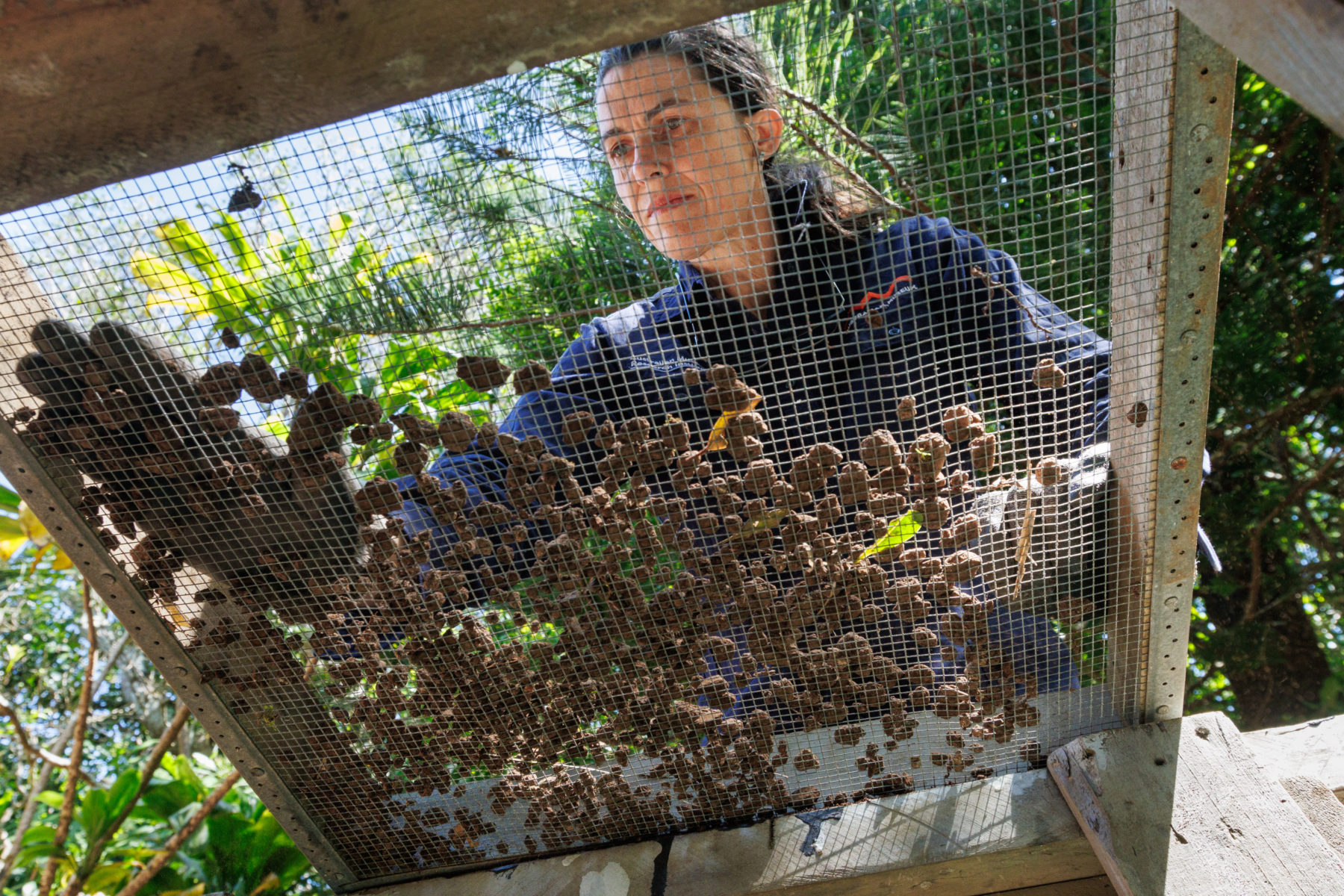
“For the Norfolk Island community, it’s also important because there’s a big Polynesian and Pitcairn community here, so many Pacifika are local here on the island and any of this kind of prehistory information we can add to the story of Norfolk is really the aim of this sort of research.
“One of the exciting things about this site is that it’s a completely different environment to the first site that we have on the south coast, that’s in a lagoon bay. This new site is on top of a saddle between two mountains, and with the material that’s come out so far we are certainly thinking we are close to a quarry site.
“The Emily Bay [lagoon] settlement site was approximately settled between the 13th and the 15th centuries CE so we are expecting that it might line up with that site down there, but there’s still a lot of questions to be answered.”
Island knowledge
The new site was first shown to Nicola by fellow islander “Snowy” Tavener. Snowy, whose mother’s maiden name was Christian, is a direct descendant of Fletcher Christian, leader of the famed mutiny on the Bounty in the late 1700s.
The men who survived that event ended up on Pitcairn Island, near Tahiti, and all had Tahitian wives.
The resulting families relocated to Norfolk Island in the mid-1856 and many of the modern population of Norfolk identify strongly with their Polynesian ancestry, including Snowy.
He recognised distinctive flecks of basalt at the site, which he thought looked similar to artefacts he’d seen on a visit to Pitcairn Island in 2015.
Snowy was one of several local volunteers working at the site this week as the adzes were excavated. “It was spooky,” he said quietly with reverence. “I hope we haven’t disturbed ancient spirits.”
Arthur Evans, a good mate of Snowy’s and another Norfolk Islander with a strong connection to his Polynesian heritage, was also at the dig site when the first adze was unearthed.
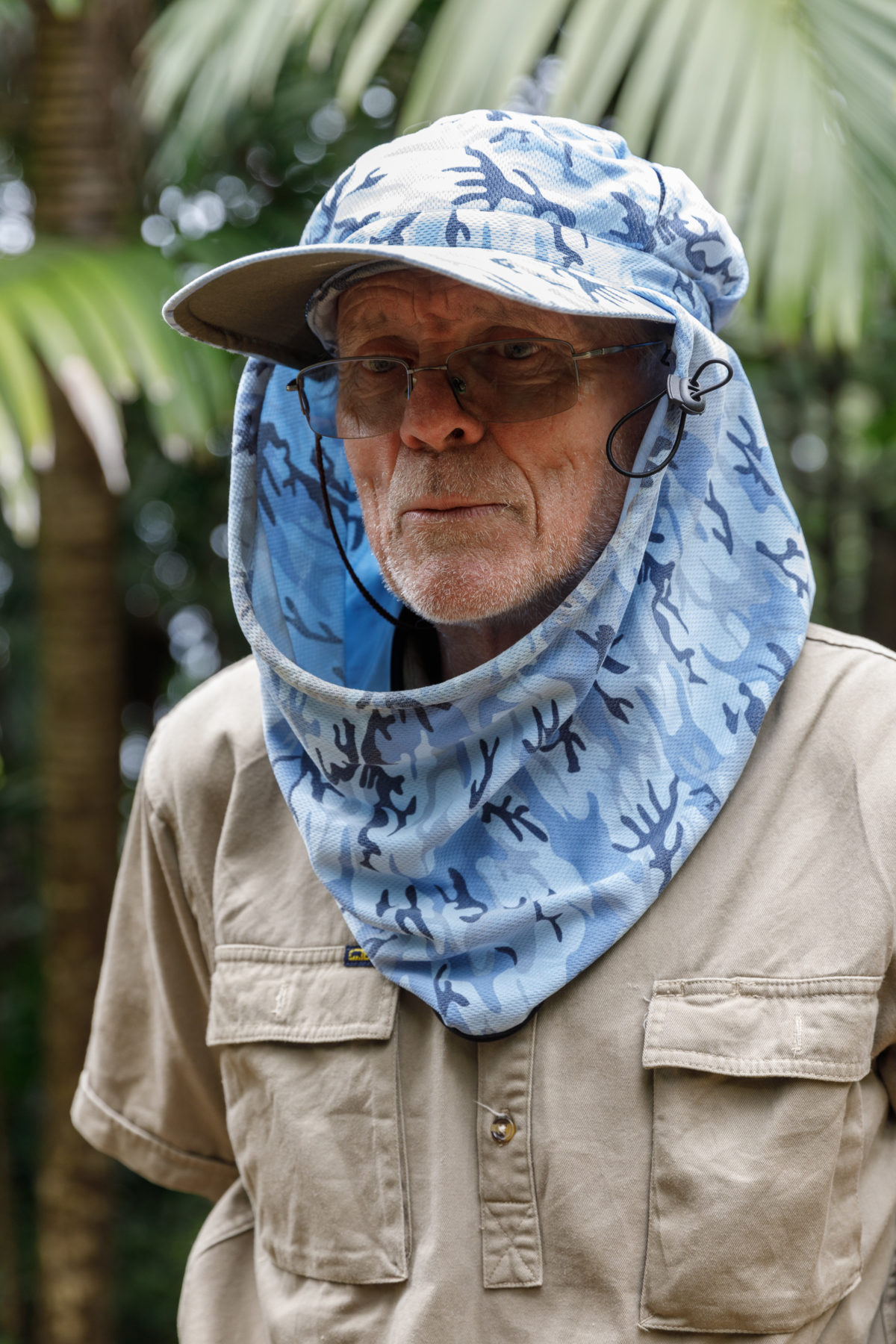
“I’m really into my Polynesian history so I’m pretty excited about this find,” he said, trying to hide a tear. “This is another important piece to our story.”
Remarkably the site is on a well-used walking track up to the top of Mount Bates, the highest point on Norfolk, that was created by heavy bulldozers for military purposes during World War II.
“The [new archaeological] site would have been walked over by many thousands of people since the middle of last century, without anyone realising its significance,” Snowy said.
The site will now be filled back up to protect it until a plan is formulated for a larger excavation.
“What we’ve already been able to confirm by working in just a 1sq.m excavation is that this was definitely an adze-making workshop, very reminiscent of a primary tool-making site,” Amy said.
“The tools made here would have been carried down to the beach for sharpening, possibly to the Emily Bay site, because that’s the only place on the island where there is sandstone and you need water and sandstone to sharpen basalt.”
Professor Kris Helgen, Director and Chief Scientist of the Australian Museum Research Institute in Sydney, who arrived on the island and went straight to the excavation site shortly after the first adze was found, is ecstatic.
“Because so little was previously known of Polynesian history on the island, this is an absolutely transformative find,” he told Australian Geographic. “This is just the beginning of being able to learn more about this fantastic new site.”
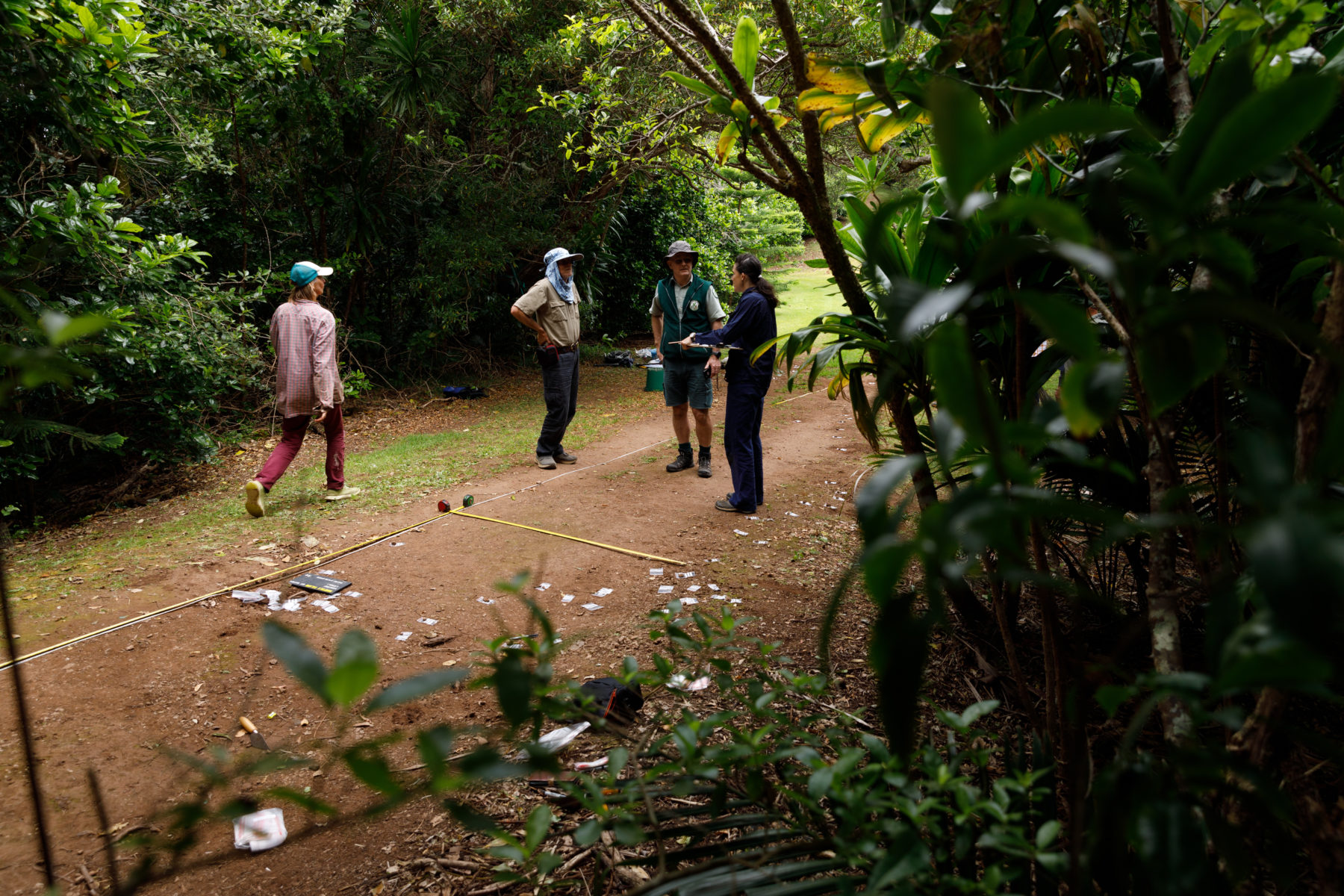
Further excavation planned
At the end of the week the site was carefully filled back in to preserve its integrity. Planning will now get underway with the local Norfolk community, the national park where the find is and the Australian Museum and University of Sydney.
The dig was the first part of three multi-institutional international expeditions to be led by the Australian Museum exploring the human history and biodiversity of the Norfolk Island group, which also includes the smaller Phillip and Nepean islands. It involves scientists from several Australian and New Zealand institutions as well as the local Norfolk community.

